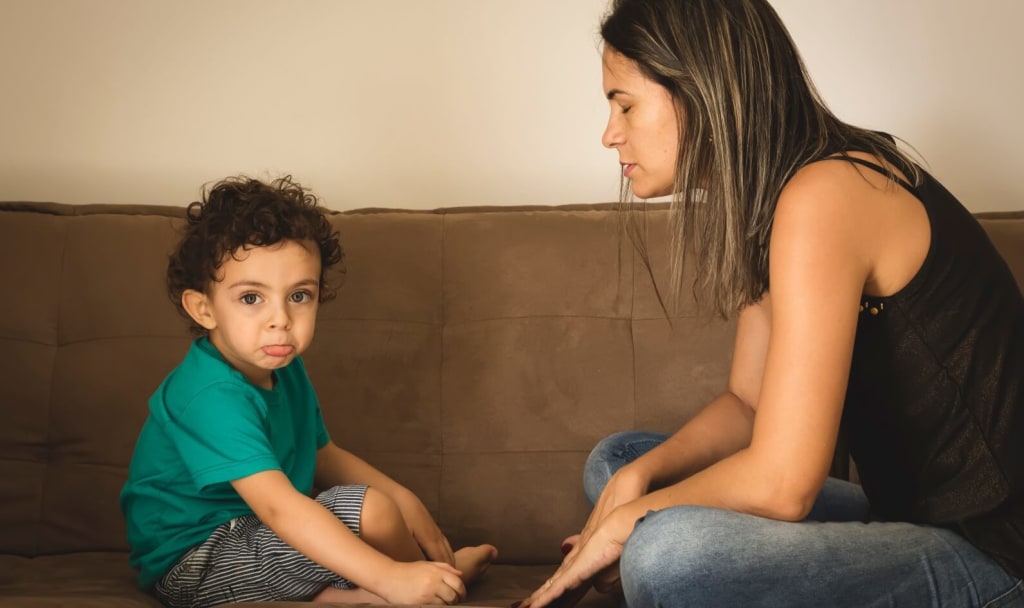The Power of Positive Discipline: Effective Strategies for Behavior Management
Nurturing Emotional Well-being, Empowering Growth, and Fostering Harmony

Introduction
In the world of parenting and education, behavior management is a topic that is constantly discussed and debated. As caregivers and educators, we strive to guide and shape the behavior of children in a positive and constructive manner. However, traditional discipline methods often focus on punishment and negative reinforcement, which can be counterproductive in the long run. In this article, we delve into the power of positive discipline and explore effective strategies that can revolutionize behavior management. Get ready to unlock a new dimension of parenting and teaching that promotes growth, self-control, and harmony.
The Shift to Positive Discipline
Positive discipline is a holistic approach that emphasizes empathy, communication, and understanding. It moves away from punitive measures and instead focuses on building a healthy relationship between the caregiver or educator and the child. By adopting positive discipline techniques, we can create an environment that nurtures emotional well-being, encourages cooperation, and promotes self-discipline.
Encouragement over Criticism
Positive discipline begins with encouragement. Instead of criticizing or punishing undesirable behavior, we aim to motivate and inspire children to make better choices. Encouragement focuses on acknowledging their efforts, highlighting their strengths, and guiding them towards positive alternatives. By providing positive reinforcement, we empower children to take responsibility for their actions and develop a sense of intrinsic motivation. For example, praising a child for their perseverance when faced with a challenging task can boost their self-confidence and encourage them to tackle future obstacles with determination.
Effective Communication
Clear and effective communication plays a vital role in positive discipline. We must strive to establish open lines of communication with children, allowing them to express their feelings, thoughts, and concerns. By actively listening to them, we validate their emotions and foster a sense of trust. Engaging in meaningful conversations enables us to understand the root causes of certain behaviors, paving the way for cooperative problem-solving and conflict resolution. By communicating effectively, we create an environment where children feel heard and valued, promoting healthy emotional development and stronger relationships.
Setting Clear Expectations and Boundaries
Children thrive in an environment with clear expectations and boundaries. Clearly defining the rules and consequences in an age-appropriate manner provides a sense of structure and security. By involving children in the process and explaining the rationale behind these guidelines, we empower them to make informed decisions. Consistency in enforcing these boundaries is crucial to ensure that children understand the importance of accountability. For instance, outlining the household rules and discussing the potential consequences for breaking them helps children understand the boundaries and their responsibilities within the family.
Redirecting and Teaching Problem-Solving Skills
Positive discipline encourages us to shift our focus from punishing misbehavior to teaching problem-solving skills. Instead of simply reprimanding a child for an inappropriate action, we redirect their behavior towards more acceptable alternatives. By teaching them problem-solving skills, we equip them with the tools needed to navigate challenges, resolve conflicts, and make better choices in the future. For instance, if a child is throwing toys in frustration, we can redirect their attention to an alternative activity or teach them alternative ways of expressing their emotions, such as using words or seeking help from an adult.
Modeling and Reinforcing Positive Behavior
Children are highly observant and tend to imitate the behaviors they witness. As caregivers and educators, it is vital for us to model the behavior we wish to see in children. By consistently demonstrating kindness, respect, and empathy, we set a positive example that children can emulate. Additionally, acknowledging and reinforcing positive behavior through praise and rewards further encourages the repetition of desirable actions. For example, acknowledging a child's act of sharing by praising their generosity can reinforce the importance of kindness and encourage them to continue exhibiting such behavior.
Conclusion
Positive discipline is a powerful tool that can transform the way we manage behavior in children. By focusing on encouragement, effective communication, clear expectations, redirection, and modeling positive behavior, we create an environment that fosters growth, self-control, and harmonious relationships. Embracing these strategies empowers children to develop essential life skills, such as self-discipline, problem-solving, and empathy, which will serve them well into adulthood. Let us embark on this journey together, where positive discipline paves the way for a brighter future for our children. With these powerful strategies in our hands, we can shape a generation of resilient and compassionate individuals ready to thrive in the world around them.





Comments
There are no comments for this story
Be the first to respond and start the conversation.